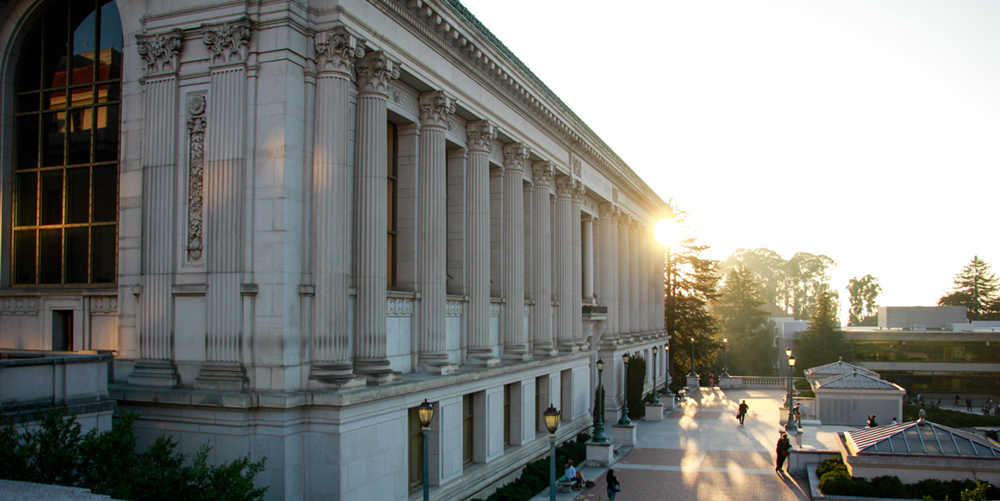
On Feb. 23, UC Berkeley released the long-term space plan for the Library, a detailed document outlining a sustainable vision for the future amid shrinking budgets for staff, services, and collections.
Here are some key facts that address common misconceptions about the plan.
1. Reductions to the UC Berkeley Library’s budget require a consolidation of campus libraries.
Funding to the UC Berkeley Library has decreased while enrollment has grown. As a result of budget constraints, the Library has a smaller workforce that can support fewer service points — that is, staffed information and service desks within the libraries.
Berkeley has significantly more library service points than other research-intensive public universities, including other UCs. During the 2021-22 academic year, Berkeley supported 50 library service points. By comparison, UCLA served 12 service points and UC San Diego staffed six.
Future increases to the Library’s budget could result in improvements to campus libraries and, potentially, extended hours. Alternatively, stagnant or reduced budgets will require further consolidation of collections and spaces.
2. Patrons will still have access to materials held by the libraries that are merging.
Under the space plan, three of the Library’s 23 locations are identified as closing and merging, with their collections and staff joining the library with the greatest disciplinary affinity: the Anthropology Library, with the Main (Gardner) Stacks; the Mathematics Statistics Library, with the Engineering Library; and the Physics-Astronomy Library, with the Chemistry and Chemical Engineering Library.
Collections from the merged libraries will continue to be cared for and managed as part of the UC Berkeley Library’s collection. Low-use materials will be transferred to the Northern Regional Library Facility, or NRLF, in Richmond, from which there is a free delivery service to campus. A significant portion of each collection will stay on campus, where the materials will be available for browsing and checkout for longer hours than they are currently. The collections will continue to be available to the entire UC Berkeley community and the general public. (Members of the public can access Main Stacks’ materials on-site through free passes that grant one-day or longer-term access; access to materials at the Engineering Library and the Chemistry and Chemical Engineering Library requires no pass, identification, or prior arrangements.) The Library will continue to acquire new materials (both print and electronic) for the disciplines covered by the libraries that are closing.
Browsing shelves is not the primary approach for students and scholars at a research-intensive university like Berkeley, whose libraries hold more than 13 million volumes. The online integrated library system UC Library Search is a critical tool for discovering physical materials shelved in our multiple campus libraries and the University of California’s regional library facilities; content available as e-resources; and research materials that the Library can borrow from other research libraries.
3. The Library will continue to support students and faculty in all disciplines.
The Library will maintain its support of the research, teaching, and learning in the fields served by the three libraries undergoing mergers. Students and scholars in all disciplines will continue to have access to a range of in-person and online services, including research appointments, 24/7 chat, online FAQs, and more.
In addition, as academic disciplines become more interdisciplinary, research libraries are seeing the value of combined collections and a team-based approach to supporting complex research needs. The long-term space plan provides a model that can adapt as the university’s research needs evolve, while recognizing that libraries, library collections, librarians, and library staff continue to be vital to a research university.
4. The plan need not result in a reduction in campus study spaces.
Once the library mergers are complete, the spaces will be reassigned by campus. The spaces occupied by the merging libraries may not be closed for students: Depending on how the campus reassigns them, they may become student-dedicated spaces and locations designed to foster community, just not under the oversight of the Library. The Space Assignments and Capital Improvements Committee has invited academic departments to make proposals for future uses of the spaces.
5. The Library shared a proposal and sought feedback before finalizing the plan.
In October, the Library released a proposed vision for the future of its spaces and services. During the consultation period, the Library received input from more than 400 students, faculty, staff, and others through conversations, forums, and an online form. The proposal was then revised in light of the feedback. In February, the university librarian and the executive vice chancellor and provost released the approved long-term space plan for the Library.
6. Reports of firings or involuntary departures are untrue.
The long-term space plan is not associated with any layoffs, and reports of firings or involuntary departures are untrue. Over the past several years, the necessary staffing reductions at the Library have been carefully planned through attrition (people voluntarily departing to take other positions that matched their career goals, or retiring). The Library workforce includes dedicated librarians, career staff, and student employees — together, they make possible the hours and services the Library offers.
Want to learn more? Read the long-term space plan for the Library.
Editor’s note: This article was updated from its original form.